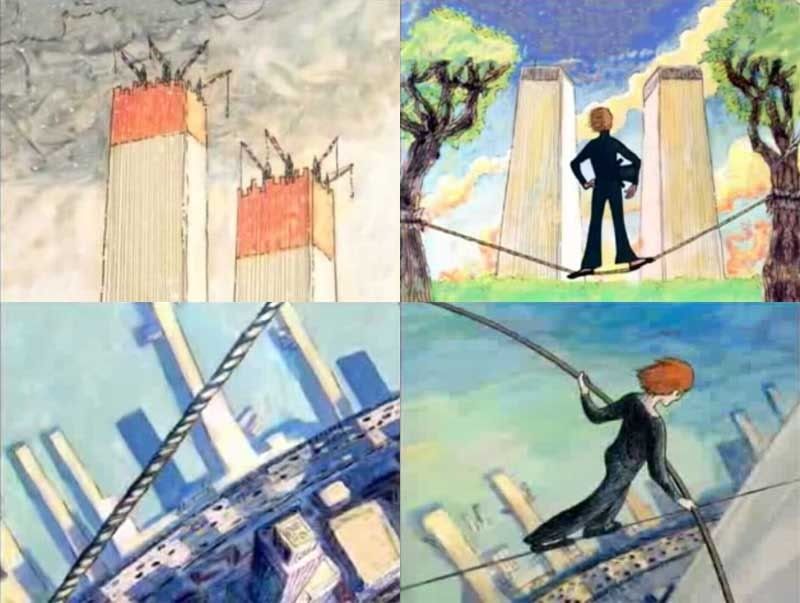The Man Who Walked Between the Towers
By Mordicai Gerstein
5/5 *****
3rd-5th graders
I found this Caldecott Award winning book to be quite unique and interesting. It wasn’t the typical non-fiction story. The illustrations were outstanding; several of the pages opened up into 3-page long illustrations detailing city skylines and beautiful views of the city. Philippe, the main character in the book, secretly ties a wire between the World Trade Centers, and walks across it mid-day in 1974. It is based on true events according to the final page of the book. I think this would be a great book to use in the classroom for several reasons.
 The illustrations are fantastic. They expand on what the writing says, and this is one sign of a high quality picture book. One main way I would personally use it in the classroom, is to relate to social studies. This is based on a historical event, although it may not follow the exact details all the way through. It would be great to have upper elementary students do some research on a little known figure in history, and to think of some way to creatively tell their story to the class. It would be a fun and interesting way to explore different parts of history, and then to use creativity and writing skills to share their findings with their peers. Because the police were involved and Philippe was arrested for his actions, this is yet another way to relate the book to history. There have been many times that people in history have done things knowing they would get arrested, but they did them anyway because they felt passionately about it. Using this as a light hearted example to lead into Civil Rights era situations (ie Rosa Parks, Ruby Bridges, peaceful sit-ins etc… ) could be a meaningful activity for the students.
The illustrations are fantastic. They expand on what the writing says, and this is one sign of a high quality picture book. One main way I would personally use it in the classroom, is to relate to social studies. This is based on a historical event, although it may not follow the exact details all the way through. It would be great to have upper elementary students do some research on a little known figure in history, and to think of some way to creatively tell their story to the class. It would be a fun and interesting way to explore different parts of history, and then to use creativity and writing skills to share their findings with their peers. Because the police were involved and Philippe was arrested for his actions, this is yet another way to relate the book to history. There have been many times that people in history have done things knowing they would get arrested, but they did them anyway because they felt passionately about it. Using this as a light hearted example to lead into Civil Rights era situations (ie Rosa Parks, Ruby Bridges, peaceful sit-ins etc… ) could be a meaningful activity for the students. The language the author used to write this story is absolutely beautiful. It is almost poetic sounding, although there is no rhyming involved. The descriptions of events and people are very detailed, and it really gets the reader intrigued and curious about what is going to happen.
One thing that was a little awkward for me was when the author mentioned, “Now the towers are gone”. I felt like it either needed to be left out or at least briefly explained. Because 9/11 is such a tragic and recent event in our history, it is almost insulting to those who have been directly impacted by the attacks of 9/11 to mention it so briefly like this.


I agree about the "now the towers are gone" statement that was in the book. I didn't think it explained what that was referring to well enough to include it in the book. Such a major event like 9/11 ought to be discussed in depth or not at all. I liked that the book didn't refer to 9/11 because it focused on the event at hand, but with that line, it bothered me.
ReplyDeleteI haven't read this book but i'm curious about the history of the man walking across the buildings. From reading just the beginning of your blog without reading the 9/11 reference in the book, I can also see that it seems unnecessary because it has nothing to so with the main point of the book. The author could have included a historical reference page to 9/11 in the back.
ReplyDeleteThey really shouldn't have added the "now the towers are gone" line at the end. I believe that while we shouldn't treat the horrors of 9/11 lightly in any way, I still would like people to remember the Twin Towers as majestic, imposing monuments that defined New York: to not remember them solely for one tragic day, but to commemorate and celebrate them for the three long decades they graced NYC with their presence.
ReplyDelete